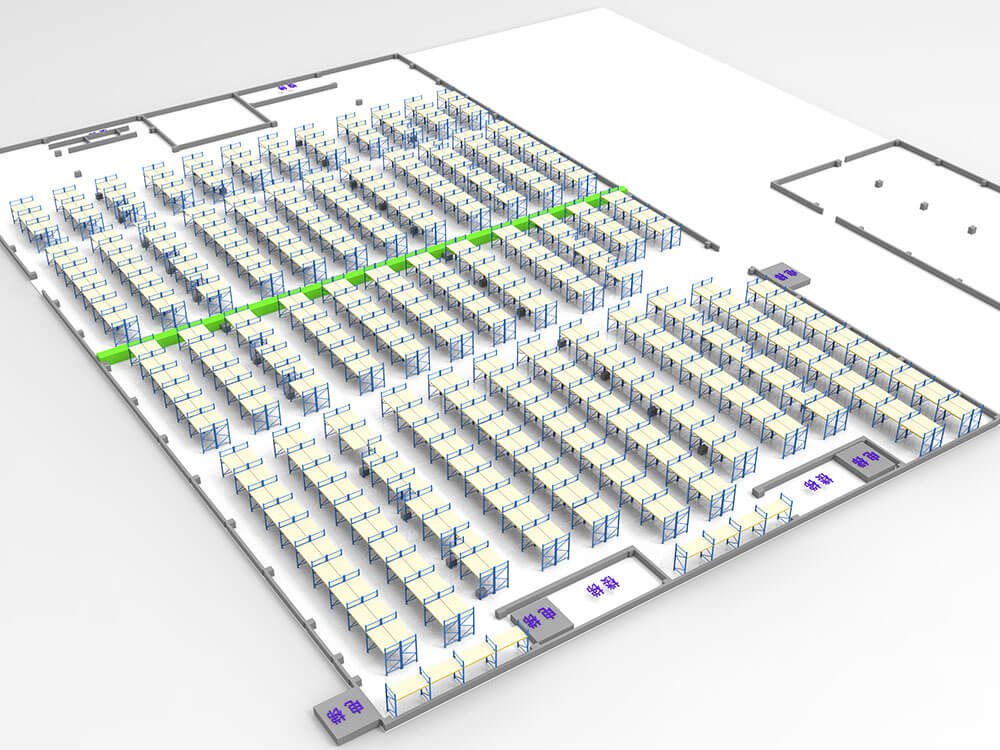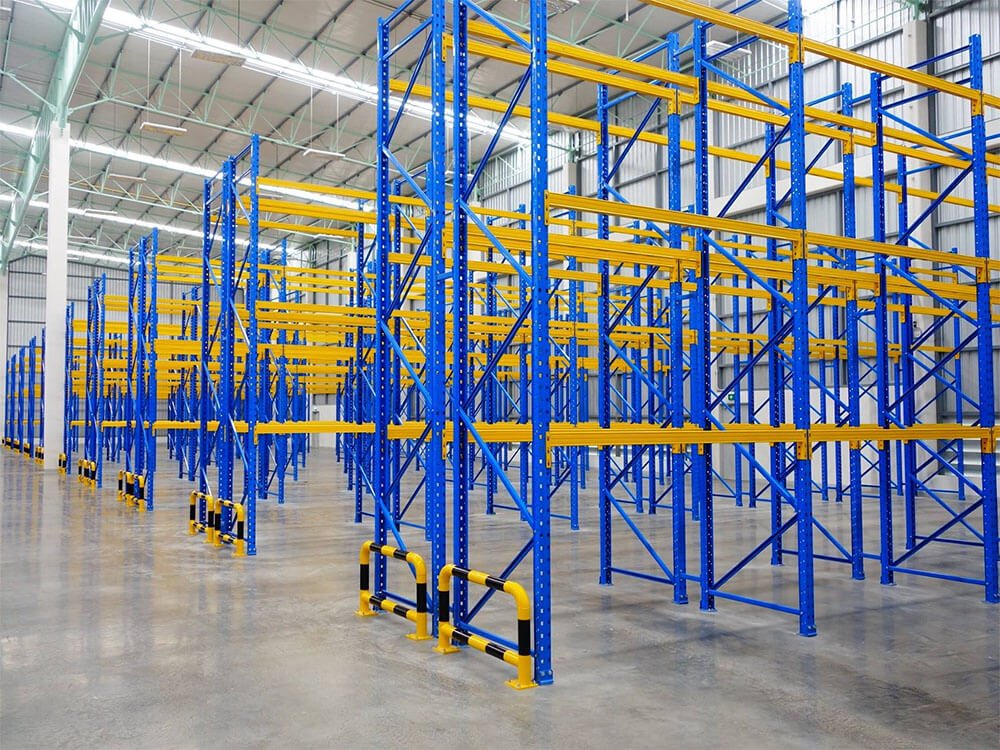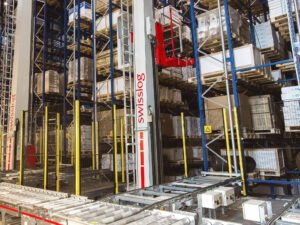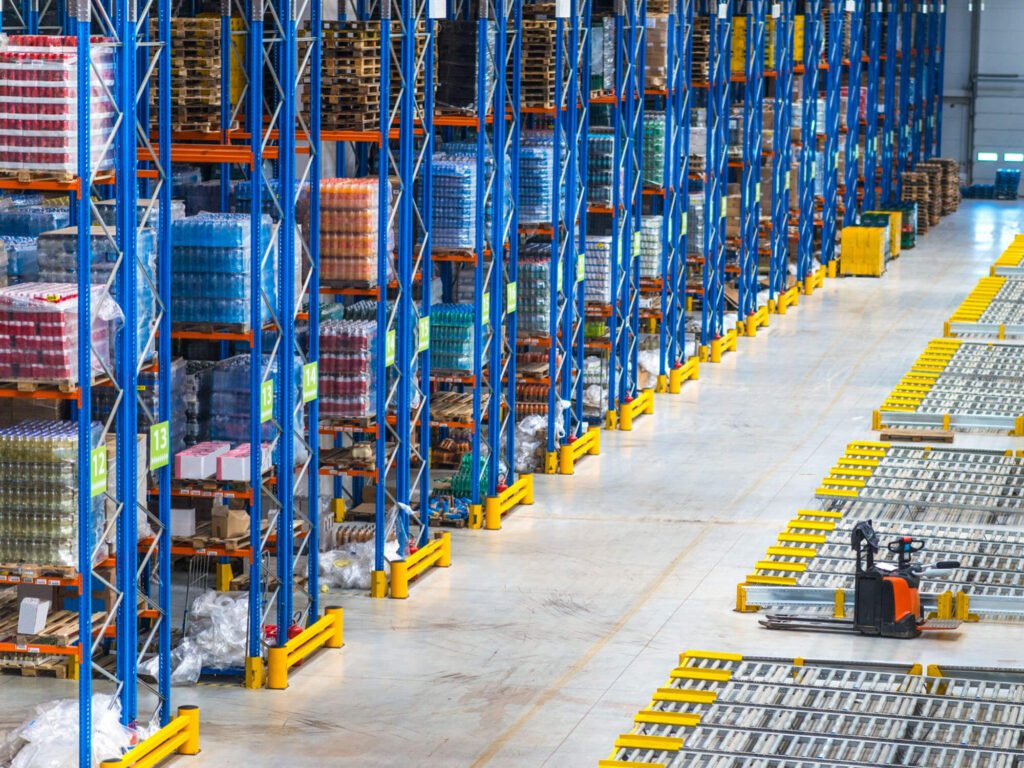For any business seeking to maximize profits, warehouse improvement ideas are crucial in facilitating effective management. In the absence of ongoing enhancement, your organization will rapidly lag behind its industry counterparts and rivals.
Sadly, in today’s world, many managers still believe that warehouse management is just about organizing items meticulously and collecting them when required. But the truth is, it’s much more nuanced than this. It’s about boosting productivity while cutting costs.
If you’re eager to enhance your warehouse effectively, let’s delve further into some top-notch warehouse improvement tips in this post. These are practical, actionable suggestions you can seamlessly integrate into your facility.
Preliminary Steps To Warehouse Improvement Process
Before jumping into the juiciest warehouse improvement ideas, let’s lay some groundwork first. These initial steps are crucial for understanding your warehouse’s unique needs and figuring out the best strategies to make those improvements stick.
Finding The Right Inventory Management Tactics
Balancing order fulfillment needs with keeping inventory costs in check is key to effective inventory management. Making the right choices here can boost efficiency, keep customers happy, and pad those profit margins.
But managing your stock isn’t a walk in the park. You’ve got a lot of plates to spin, including:
- Making sure you’ve got just enough inventory (not too much or too little).
- Getting orders out the door fast.
- Speeding up processing times.
- Keeping workflows smooth and seamless.
- Keeping products moving smoothly.
- Ensuring your products are easy to find and select.
- Keeping productivity levels high.
- Making the most of your inventory space.
With the right inventory management strategy, you can tackle all of these challenges head-on. Here are some tips to get you started:
- Keeping inventory costs down.
- Boosting operational efficiency.
- Making order fulfillment a breeze.
- Slashing the error rates.
- Improving staff productivity.
- Using a warehouse management system for real-time inventory tracking.
- Upgrading and analyzing your picking methods.
- Utilizing cross-docking to reduce shelves and expedite orders more quickly.
- Making use of several methods for managing inventory, such as FIFO and LIFO.
- Constructing a warehouse that can meet all of your inventory requirements.
- Integrating advanced software and technology.
In order to implement those tips above, you will need to effectively categorize your items with some tactics. Let’s go over the following strategies to better manage your inventory:
- ABC Analysis: One method for categorizing stock is the ABC analysis, which divides your items into three groups according to their value and importance:
- A-items: These high-value products generate a lot of revenues but only make up a small fraction of the inventory. Always monitor them closely to make sure they never run out of stock.
- B-items: These medium-value products occupy a moderate portion of the overall inventory and also contribute a moderate share of the revenue. Normal supervision and control are necessary for them.
- C-items: These low-value products make up a significant chunk of the overall stock yet bring in only a small amount of revenue. They require minimal monitoring and control.
- Drop Shipping: In drop shipping, the consumer places an order and provides relevant information. Then, the manufacturer fulfills the purchase and sends the goods to the consumer. This eliminates the need for warehouse storage. Plus, it has a positive cash flow lifecycle and no requirement for upright inventory expenses.
- Just In Time (JIT): This system involves the purchase of stock a few days before it’s required for sale or distribution. Thus, companies employing JIT can save their inventory costs and minimize the time that products spend on shelves. However, to use this tactic successfully, you will need precise insights about such elements like seasonal demand, reliable supplier sources, and client purchasing behaviors.
Assessing Your Warehouse
Spotting inefficient areas and coming up with strategies to tinker with them is the ultimate goal of all warehouse improvement ideas. Thus, prior to making effective and actual improvements, you need to know exactly where to improve.
To achieve that, one of the first things to do is evaluate your warehouse. You should always carry out this preliminary step before developing actual enhancement strategies. Through careful assessments, you can gain input on whether your warehouse operations are meeting the customer’s requirements and are effective enough.
If that’s not the case, you should look at ways to enhance all of your warehouse’s services and operations. In order to have a successful assessment, it’s important to consider every step of the facility’s activities, from receiving to shipping, and spot which parts require improvements.
One important note is that assessing warehouse operations is more than just observing activities and gathering data. As a warehouse manager, you should also exchange with key staff members, determine your facility’s current service and productivity levels, and compare them against external benchmarks to find areas for potential refinement.
A proper warehouse assessment is not only beneficial for later improvements but also a brilliant way to reduce costs, as it helps promote the use of more efficient software, facilitate better HR training, and optimize warehouse productivity and inventory management systems.
If you are still ambiguous about what aspects to look at during the warehouse assessment, then here are a few suggestions:
- Warehouse space utilization and capacity.
- Present warehouse layout.
- Current inventory management systems.
- Value-added services such as labeling and repacking.
- Software for warehouse management.
- Material handling equipment, such as forklifts.
- Product slotting strategies.
- Operational benchmarking metrics and standards.
- Advanced technology and automation.
Improving Your Warehouse’s Layout
Making smart changes to how your warehouse is set up can make a big difference in how well you manage inventory, leading to a smoother operation and more accurate order picking. It’s not just about saving time and money, it’s also about keeping customers happy.
The layout and size of your warehouse should match the products you’re storing and how you use the inventory space. For example, if you’re storing perishable goods, a cold storage warehouse is a must. That means you should design it with that specific purpose in mind, rather than using layouts meant for electronics.

There’s no one-size-fits-all approach to improving warehouse layout. Whatever changes you make, they should fit the needs of your inventory, cut down on unnecessary travel time, and speed up order processing.
Of course, revamping your warehouse isn’t a walk in the park. But to help you navigate this task, here are some things to keep in mind:
- Understanding what you’re storing: Start by figuring out what products will be in your warehouse and how much space they need.
- Picking the right storage method: Decide whether your warehouse will be best managed manually or with automation, and choose the inventory system that suits your goods. Automation is great for big warehouses, while manual systems are often better for smaller ones.
- Assessing current performance: Learn how well your warehouse is currently running by comparing its actual performance to the key performance indicators.
- Establishing yard management: Strategic yard management keeps goods moving smoothly in and out of your warehouse. Utilizing this system allows you to keep a close eye on everything happening on your premises.
- Using space wisely: Well-planned and smartly distributed warehouses make for smoother workflow and better productivity. Thus, let’s focus on maximizing your inventory space, both horizontally and vertically, rather than just scattering items around.
- Planning for growth: It’s wise to leave room for expansion. That way, if demand for your products abruptly increases, you’ll be ready to scale up without major disruptions.
- Digitally simulating upgrades: Use digital simulations to test out upgrades before committing to them in real life. It’s a great way to see if changes will work without any costly surprises.
Essential Warehouse Improvement Ideas
When stepping into the world of warehouse improvement, you will be amazed at how vast it is. In this part, let’s discover some of the most practical warehouse improvement ideas to implement in your facility.
Going Lean
This approach allows warehouse managers to recognize inefficient spots that don’t add much value to the overall performance. It’s like giving your facility a makeover by trimming its fat, whether it is overstock in certain areas, slow-moving products, or slow good replenishment.
As a result, going lean enables your goods to move smoothly through the system while saving a big chunk of expenditures.
Standardizing Work Procedure
A standardized work procedure paves the way for a smoother, smarter way of working. Having one is like holding a blueprint for efficiency in your hand. It helps reduce errors, and ensure every team member knows exactly what they need to do.
Additionally, this approach provides all your employees, from fresh faces to veterans, the chances to grow and learn. Newbies can access step-by-step procedures to guide them, while seasoned pros have a chance to keep learning and stay away from complacency.
Picking Your Ideal Storage Solution
If your storage space feels like it’s not living up to its potential, it’s time to rethink and opt for a more suitable inventory solution. There are a plethora of storage systems available on the market, each of which is ideal for a particular set of circumstances.

If selective pallet racks are versatile and can handle items of various sizes and weights, making them great for warehouses with diverse products, then high-density racking systems like push-back racks, pallet flow racks, and drive-in/drive-thru racks can really make the most of your warehouse’s space.
And if you’re dealing with too much product volume, consider automated storage solutions. They can offer greater control over your inventory, ensure a smooth operation, and avoid errors that come with manual methods.
Empowering And Training Employees
If the initiatives above focus mainly on warehouse strategies and tools, this approach is quite different as they are human-centric. In order to level up your facility, it’s essential to empower and train your employees, giving them more control and authority over their work.
When you give your staff more control over their work and involve them in decision-making, it’s like adding fuel to the fire of motivation. It fosters a culture of teamwork and problem-solving that drives better results.
Through empowerment and training, you can achieve a more professional workforce and cultivate a culture of teamwork that drives success. These initiatives also keep everyone in the loop with the latest trends so they can execute company plans like pros.
Investing in ongoing training and development for your team is crucial. It keeps everyone sharp and ensures your company stays ahead of the curve with technology updates and upgrades. You can also get frequent feedback and do one-on-one or Q&A sessions with staff to address any issues they are experiencing.
Below are certain tactics to better execute this initiative:
- Cross-training: Your personnel can greatly benefit from cross-training, as this activity equips them with the know-how to do more than just the requirements in their job description. It also helps create a more flexible and all-rounded workforce.
- Recognizing top performers: As trivial as it may seem, recognizing your top performers and praising their achievements verbally is really important. When done properly, you can significantly boost your staff morale and pave the way for greater productivity.
- Utilizing incentive pay: At first, it might increase your cost. However, in longer-terms, incentive programs can drive more financial gains through better staff performance. One effective way to implement this incentivized method is to make it visual, such as using a chart featuring both a target line and an actual performance line.
Auditing Regularly
Regular audits are like the heartbeat of your warehouse. They give you a pulse on what’s going well and what needs a tune-up. From checking how productive your team is to scrutinizing your layout for any wasted space, audits help you locate trouble spots.
Doing these checks frequently lets you keep track of how your efficiency improvements are going and make appropriate tweaks along the way.
Applying Visual Management Tools
Another way to increase your warehouse efficiency is to utilize certain visual management tools, such as signs, floor marks, lighting, flowcharts, and Kanban boards. With these reliable tools, your staff can locate the required items more quickly and easily, thus boosting the overall warehouse performance.
One tip when integrating these tools into your facility is to get everyone involved and understand its necessity. Listen to your team members, especially about their challenges during the work, and employ these tools appropriately for maximum effectiveness.
Kaizen Ideas For Warehouse Improvement
Deriving from a Japanese concept, Kaizen is translated as continuous improvements or constant striving for better outcomes. This idea is imperative because it stresses the importance of consistent assessment and exploration of new methods for warehouse improvement.
There are a wide array of warehouse Kaizen ideas you can implement in your inventory facility. Some of the approaches include the 5S system, root-cause analysis, and the Kanban system.
Kaizen-based approaches provide you with a flexible mindset, which enables better adaptation to ever-changing market dynamics. From that, you can make necessary adjustments to ensure the top-notch performance for your warehouse.
Integrating Advanced Technology
Advanced technology can really transform your warehouse from good to exceptional. It provides you with numerous benefits, such as real-time data to improve the accuracy of warehouse management.
One example of technology integration is the use of a high-quality, cloud-based warehouse management system (WMS). This ensures the most economical and streamlined product flow that can help ward off manual and repetitive tasks.
There are also other methods you can choose to revolutionize your inventory facility, such as:
- Voice-activated technology: This system is especially suitable for cold storage. Order pickers can receive voice guidance on where to go, what to select, and where to deliver it via headphones, which is clearly more efficient than having to read documents or verbally exchange with managers.
- RFID (Radio Frequency Identification): This technology offers high picking precision by getting rid of human error, saving time by utilizing automation to communicate with warehouse software, and increasing productivity by rapidly determining the exact spot of an item.
- Drones: Drones can fly above your warehouse and do routine inventory checks. It can also detect inventory inconsistencies, reduce human labor, access difficult-to-reach areas, gather real-time information on stock levels, and monitor the facility for security breaches.
Why Continuous Warehouse Improvement Matters?
Improving processes is crucial for keeping your warehouse running smoothly. When managers take the time to analyze and tweak workflows, it can lead to big gains in productivity and efficiency. Here’s why ongoing improvement process is so important:
- Increasing productivity: By streamlining operations and removing obstacles, you can move more goods through your warehouse in less time. That’s a win-win for your bottom line and your team.
- Faster turnaround: Making tweaks to processes can speed up the time it takes for goods to move from receiving to delivery. That means happier customers and shorter lead times.
- Precision matters: When you improve processes, you also improve accuracy. That means fewer mistakes, better orders, and less chance of products getting damaged or lost.
- Waste reduction: Fine-tuning processes and nipping inefficiencies in the bud helps cut down on waste, whether it’s excess inventory or unnecessary handling. That translates to lower costs and smoother operations.
- Safety first: Continuous improvement isn’t just about efficiency, it’s also about safety. Identifying hazards and putting safety measures in place keep everyone out of harm’s way.
Conclusion
There are tons of interesting and practical warehouse improvement ideas available out there. Each suggestion has its pros and cons. But they all share one thing in common, which is the aim for greater gains in efficiency, productivity, and safety of warehouses.
In this article, you have learned about some important steps that need to be conducted prior to the actual enhancements, which are finding the right storage management strategies, assessing your warehouse, and improving its layout.
This post also unveils the most practical warehouse improvement ideas to help transform your facility, from applying lean logistics strategy and standardizing work process to empowering employees and Kaizen ideas for warehouse’s continuous enhancement.
By utilizing these actionable methods, you can render maximum efficiency and productivity for your warehouse, while still maintaining its safety. Thank you for reading!




